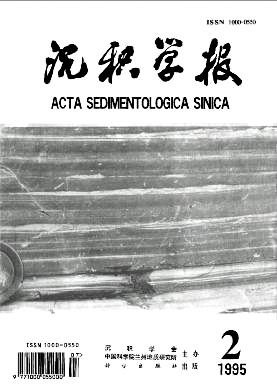A Diagenetic Model on the Formation of Carbonate Gas Reserviors in China
- Received Date: 1994-10-15
- Publish Date: 1995-06-10
Abstract: The formation of carbonate gas reserviors has a close relation with the diagenetic environment, which controls the development of primary and secondary porosities in carbonate reservoirs. In terms of burial depth and features of water medium, the diagenetic environment can be divided into three types, i. e., marine,burial and epidiagenetic environments, of which the most favorable porosity zone is shallow flat, beach and reef environments and meteoric vadose zone in epidiagenetic environment.The mechanisms responsible for the formation of carbonate reserviors are dolomitization and karstification. The fact that the excellent pore--type resrviors are commonly present in dolomite has been confirmed in many gas fields in China. The strata in which the giant gas fields formed are Sinian, Carboniferous in Sichun Basin and Ordovician in Ordos and Tarim Basin. The dolomitization developed in different stages can all produce excellent intercrystal and intergranular porosities as well as secondary porosity. The gas field reseryiors relevant to the karstification in China account for 83% in the total numbers of the proved gas fields. Theintensity and depth of karstification vary directly with the exposure time. Accordingly, the time for the slight karstification is approximately 5--20 Ma, the intermediate 40 Ma and the extensive 100-- 200 Ma, of which the first and the second contain the best porosity. Therefore, when assessing reservoir quality, this fator should be taken into consideration.The experiment results of comparision study on dissolubility and corrosion between different types of carbonate rocks indicate that limestone is greater than dolomitite in dissolublity, but inversrely in physical destruction quantity leading to the frequent observation of dolomitite breccia and solution cave in limestone in geohistory. The pure limestone appears to have the large dissolubility and rapid dissolution rate, and the average dissolubility of limestone is larger than that of dolomitite by 36%. In addition to composition, the texture is also the main factor affecting the dissolubility. Thus, dolomitite is easy to form dissolution pore along the intercrystal fissure, and micrite limestone, possessing a large specific surface area than sparite, is of rapid dissolution rate. For this reason, the karstification of ancient limestone is better developed than dolomitite,which makes the limestone an excellent reservoir in gas fields of China.On the basis of the integrated featrues of carbonate reservoir with different ages in different areas of China, the author has poroposed a diagenetic model on the reservoir formation, which describes the formation ofreservoir undergoes three important episodes in different diagenetic stages. The first episode to form secondary porosity on a large scale is closely related to the dissolution as a result of organic acid released fromthe transformation of organic matters to hydrocarbons, and the organic matter is in immature stage with burial depth less than 1000m. This episode spans at least 100 Ma. The second episode is in epidiagenesis when meteoric water leaks and dissolves the carbonate rock. Most gas reservoirs are formed in this period. The dissolution occurs in 5--200 Ma after sediment consolidation. The third episode is developed on the basis of the former dissolution and corrosion, and, while considerable karstification and collapse take place, resulting in pore fillings re dissolved and after repetition of filling and dissolution, the reservior has changed its oringinal features completely, in which only those effective porosities with no pore fillings or semi filled are contributed to the reservior formation.
| Citation: | Zhu Lianfang. A Diagenetic Model on the Formation of Carbonate Gas Reserviors in China[J]. Acta Sedimentologica Sinica, 1995, 13(2): 140-149. |






 DownLoad:
DownLoad: